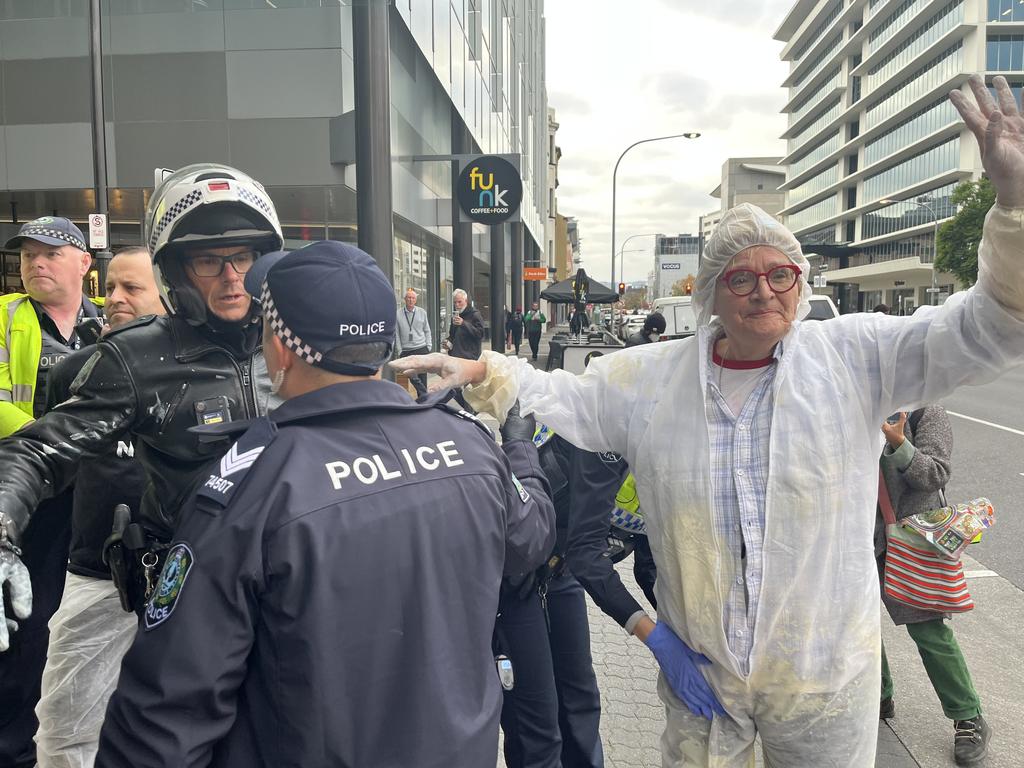Inside Extinction Rebellion: Adelaide climate protests explained
Extinction Rebellion’s headline-grabbing stunts have captured the attention and fury of the state. But who are they – and what do they actually want?
SA News
Don't miss out on the headlines from SA News. Followed categories will be added to My News.
Dangling off bridges, shutting down peak hour traffic and staging a rave party outside parliament – Extinction Rebellion’s headline-making activism has captured the attention – and fury – of the state and sparked a pitch to overhaul protest laws.
But what exactly does Extinction Rebellion want, and where did the organisation come from?
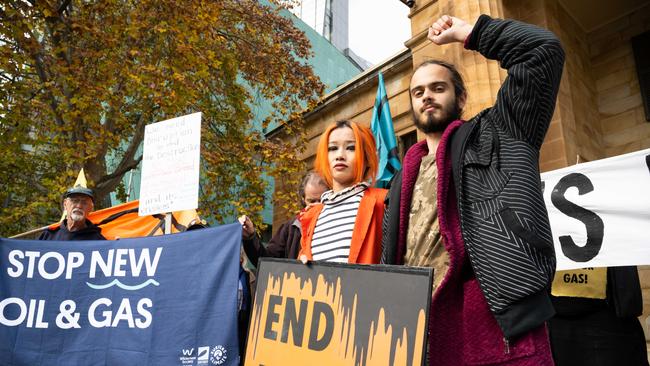
Who is Extinction Rebellion?
The environmental movement – also referred to as ‘XR’ – originated in the UK in 2018, founded by members of a campaign group called Rising Up! to force government action on the climate crisis.
Over six weeks starting in October 2018, more than 6000 “rebels” converged on London in a number of major protests, sparking the movement’s official launch.
Extinction Rebellion says life on earth is “in crisis and facing a mass extinction”, using an hourglass inside a circle as its logo to represent “time running out”.
While the group’s stated aim is to use “nonviolent civil disobedience” as a call to action, it has been regularly criticised by detractors for its disruptive tactics which often involve dramatic sit-ins, protesters gluing themselves to public thoroughfares, vandalism and shutting down travel in major cities.
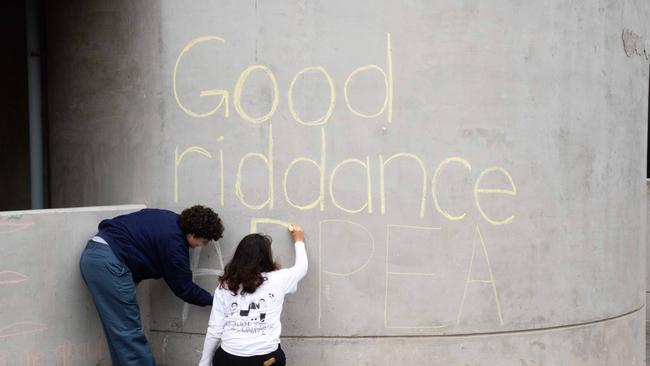
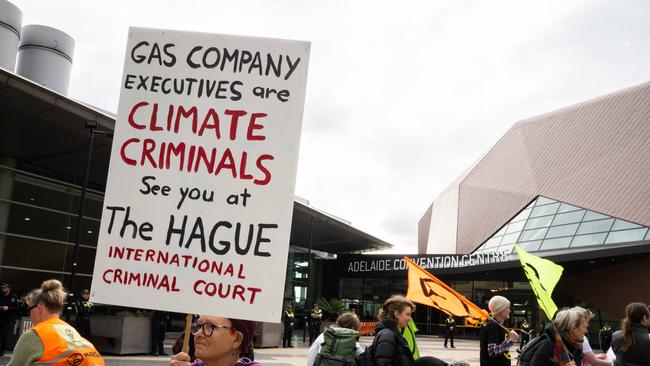
The group’s demonstrations regularly make headlines, with dozens of Extinction Rebellion demonstrators arrested across the country this year alone.
In January, two protesters were arrested after gluing themselves to the Santos building in Flinders St in a demonstration against the energy giant’s role as a major sponsor of the Tour Down Under.
A 70-year-old woman was also among three arrested for a bare-chested Tour Down Under protest days later.
Since Monday this week, five people have been arrested over protests aimed at a coal, oil and gas national conference held in the CBD.
What are the three demands of Extinction Rebellion?
The environmental group has three aims listed on its website:
- Government must tell the truth by declaring a climate and ecological emergency, working with other institutions to communicate the urgency for change
- Government must act now to halt biodiversity loss and reduce greenhouse gas emissions to net-zero by 2025
- Government must create, and be led by the decisions of, a citizens‘ assembly on climate and ecological justice
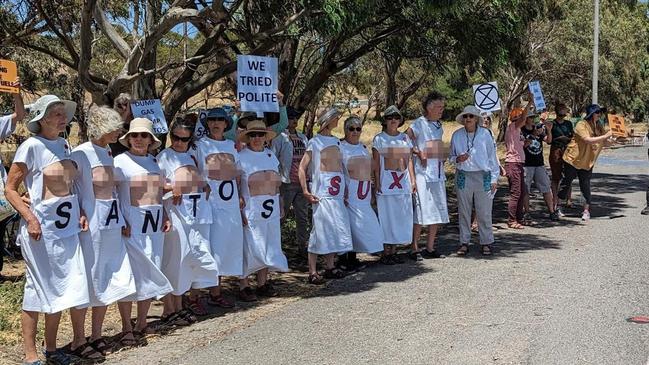
What does Extinction Rebellion want?
Extinction Rebellion demands government action on climate change – in particular, an end to the use of non-renewable energy sources such as coal, oil and gas and a reduction of greenhouse gas emissions to net zero.
This week’s protests were directed at the Australian Petroleum Production and Exploration Association national conference held in Adelaide, which was attended by key figureheads of the oil and gas industry and Tom Koutsantonis, SA’s minister for energy and mining.
At the summit, Mr Koutsantonis said oil and gas “was needed” to achieve the state government’s goal of net-zero emissions by 2050 – a comment protesters took issue with.
“Our state government declared a climate emergency last year and (now) they’re holding a coal and oil gas conference,” Extinction Rebellion spokeswoman Kate Mettam, 67, told The Advertiser.
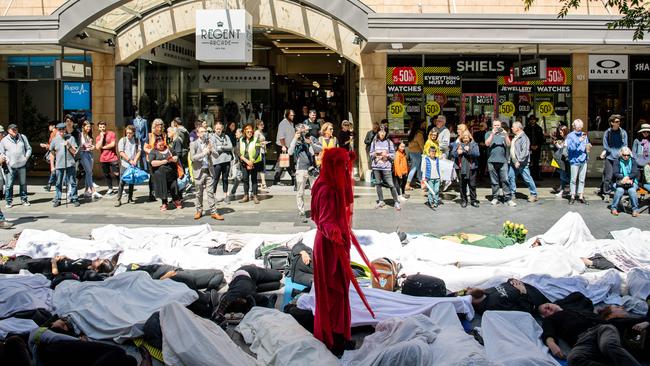
Outside the Convention Centre, where the national conference was being held, a group of protesters were heard chanting: “No more gas, no more oil, keep the carbon in the soil.”
However, the organisation’s exact demands or proposed solutions over the issue remain unclear – a sticking point used by its critics when slamming its “extremist activism”.
Last year, Mr Koutsantonis said Extinction Rebellion’s heavy-handed actions risked jeopardising their own cause and working against attempts to “bring middle Australia with us on a decarbonisation route”.
“I was there to tell the oil and gas industry conference the need to decarbonise is coming at them at a million miles an hour – we need to start decarbonising now. But they’re (protesters) not interested,” he said.
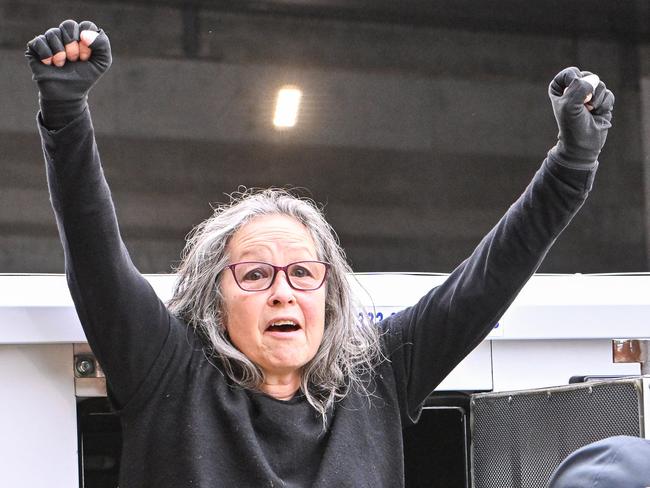
Who are Adelaide’s Extinction Rebellion members?
Extinction Rebellion members span generations and socio-economic groups, with many protesters aged over 50 years old.
The group’s Adelaide faction has dozens of members who regularly demonstrate and disrupt major events, such as this week’s coal and gas summit and the mining giant-sponsored Tour Down Under.
Extinction Rebellion’s South Australian Instagram page has more than 2,500 followers and regularly shares images and videos of the organisation’s rallies and protest events.
Four demonstrators – Brad Homewood, Sarah Edwards, Heike Weber and Ian Fox – were arrested on Thursday after alleged vandalism of the Santos building and accusations of damage to a police officer’s “full leather” uniform with spray paint.
Clinical psychologist Jane Morton, who has more than 30 years’ experience in public sector mental health services, acts as one of the group’s organisers, using her semi-retirement to plan and execute protest action.
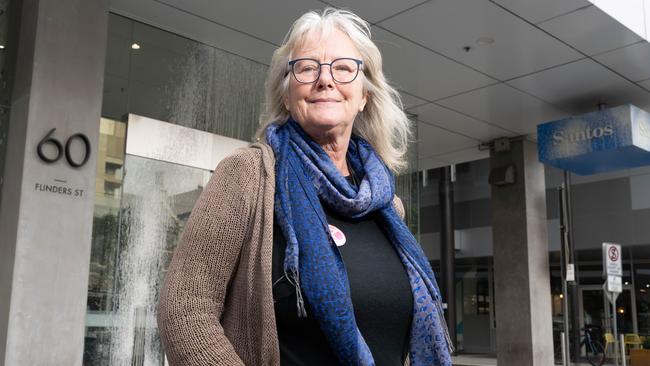
Meme Thorne, 69, was arrested on Wednesday after dangling herself from the Morphett St bridge in an abseiling stunt – her third act of “mass disruption” with the organisation.
In May last year, Ms Thorne glued her hands to Flinders Street in front of Santos House. Three months later, she climbed onto the roof of Rundle Mall Plaza in another protest.
In court on Thursday, Thorne said she understood many in the community, including Police Commissioner Grant Stevens, were upset with her – but said she was not remorseful for her actions.
“There are people who will always be annoyed when someone stands up for people who cannot speak, she said.
“No one was injured, nothing violent happened, I made a strong protest on behalf of all the people who feel the way I do about the climate catastrophe we are living in.”
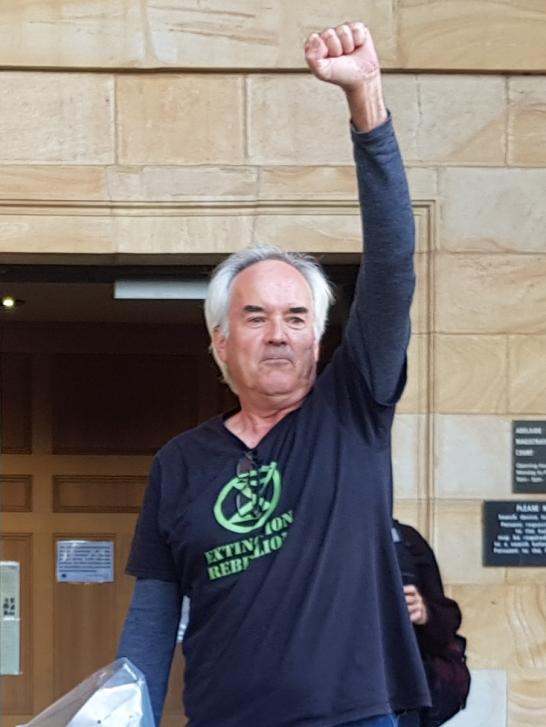
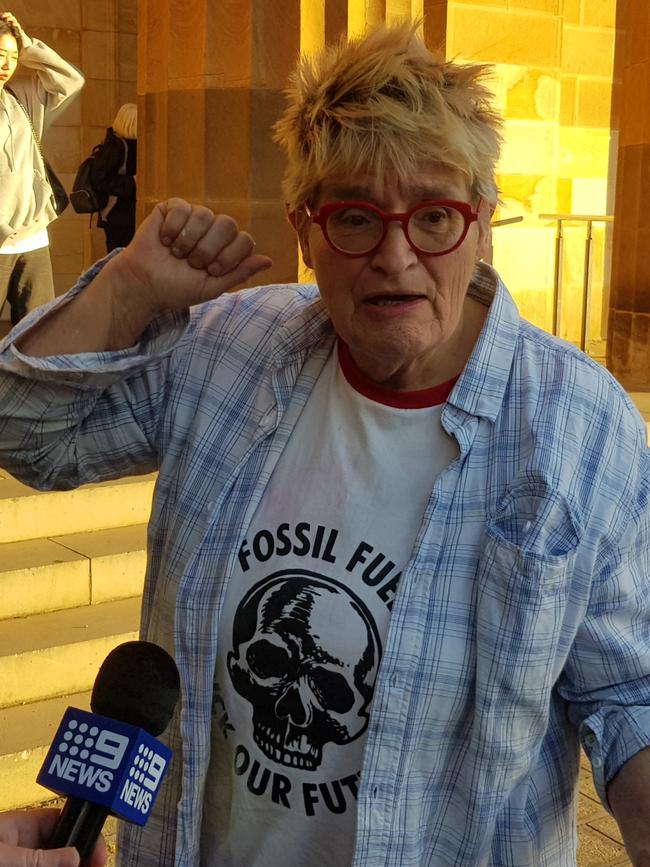
Could I get involved with Extinction Rebellion?
Extinction Rebellion’s website offers options to sign up to the group’s newsletter, meet up both online and in-person, “train up” for climate action and join its “global support team”.
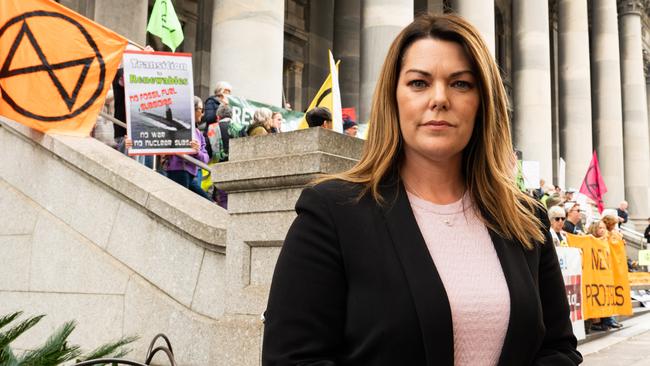
What are the changes to protesting laws proposed in the wake of Extinction Rebellion’s action?
On Thursday, South Australian Premier Peter Malinauskas and Attorney-General Kyam Maher tabled strict new laws for protesters, which would see fines for protesters who “intentionally or recklessly” obstruct the free passage of a public place rise from $750 to $50,000 maximum fine or three months imprisonment.
New rushed laws, which were proposed by the opposition, will also allow prosecutors to apply for a court order for any defendant to pay “reasonable costs and expenses” of emergency services that are required to respond.
The move has been slammed by both the Greens and human rights campaigners, who said the crackdown risked democracy, violated basic rights to protest and raised alarm with the “draconian nature” of the changes.
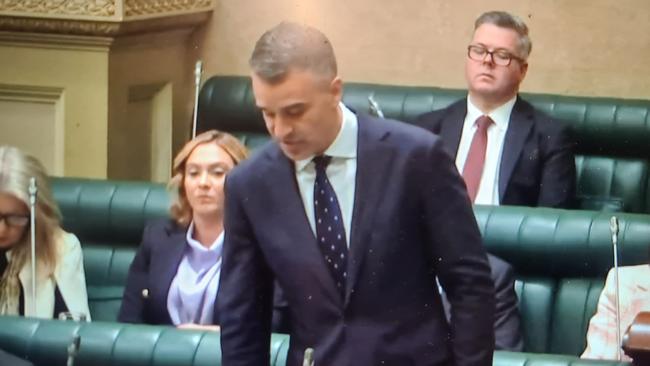
“It’s chilling to hear the major parties talking about working together to curtail the right to protest in our democracy,” Greens upper house MP Robert Simms said.
But Mr Malinauskas has denied those allegations, saying the amendments make “zero amendment” to the ability for people to protest peacefully.
“This parliament has a fundamental responsibility to achieve the preservation at all costs of freedom of association and the capacity for people to be able to protest,” he said.
“But it also maintains the ability of other citizens to be able to go about their lives, other essential workers to be able to go about their service to our community without being compromised.”
Opposition leader David Speirs, who has labelled the protesters as “greenie, leftie losers”, said extreme protesters needed to “stop the madness before someone gets hurt”.


